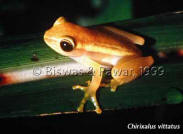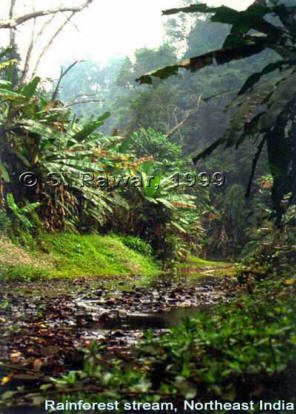INTRODUCTION |
 The South Asian region, which includes Pakistan, India, Sri Lanka, Bangladesh, Nepal, and Bhutan, is one of the biologically richest areas in the world. The confluence of different biogeographical realms and a varied physiography has endowed this region with an amazing
range of habitats
and a diverse & highly endemic biota. In fact, the region boasts of
three out of the 34 global
biodiversity hotspots that are currently recognized: the forests of
South-western India-Sri Lanka,
Himalaya, and those in Northeast India-Bhutan-Bangladesh
(the
Indo-Burma hotspot). In terms of amphibian and reptiles as well, South Asia has one of the richest assemblages in the world.
The South Asian region, which includes Pakistan, India, Sri Lanka, Bangladesh, Nepal, and Bhutan, is one of the biologically richest areas in the world. The confluence of different biogeographical realms and a varied physiography has endowed this region with an amazing
range of habitats
and a diverse & highly endemic biota. In fact, the region boasts of
three out of the 34 global
biodiversity hotspots that are currently recognized: the forests of
South-western India-Sri Lanka,
Himalaya, and those in Northeast India-Bhutan-Bangladesh
(the
Indo-Burma hotspot). In terms of amphibian and reptiles as well, South Asia has one of the richest assemblages in the world.
 It is increasingly becoming apparent that much of this diversity is being lost to habitat alteration or direct exploitation without even basic documentation.
It is increasingly becoming apparent that much of this diversity is being lost to habitat alteration or direct exploitation without even basic documentation.
Common ground
Most of us would agree that our knowledge of the region’s diverse herpetofauna is far from adequate, and that only an expanded knowledge base on the ecology and evolutionary biology of South Asian herpetofauna will allow more effective conservation strategies to be formulated and tested. And for this to happen, cooperation between workers in the region and elsewhere is needed. Nothing can advance our knowledge better than cooperative effort in research and conservation. Many committed individuals and organizations are already making significant contributions to herpetological research and conservation in the region at different scales. However, most of them are restricted to various (generally political) sections of the region. Many of these prefer to work in isolation of their own choice, and with good reason. But often, it is simply logistical problems that impede communication. Often, even minor details like contact information, and project details are hard to come by even when the person or project is/are situated in a nearby area. The need for communication between workers across political boundaries (for instance, there is literally much common ground between herpetologists working in Bangladesh, and in Northeast and Eastern India), and even between different regions of the same country (e.g., North-eastern and South-western India) definitely remains.